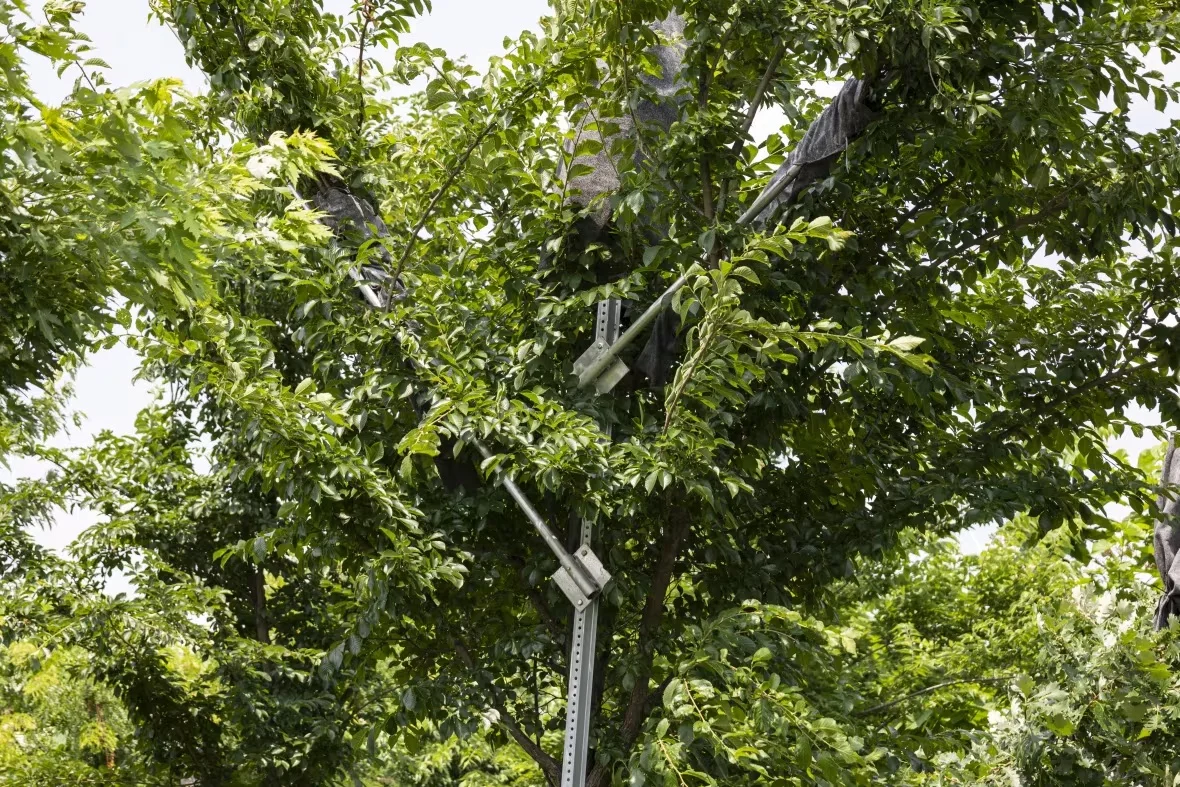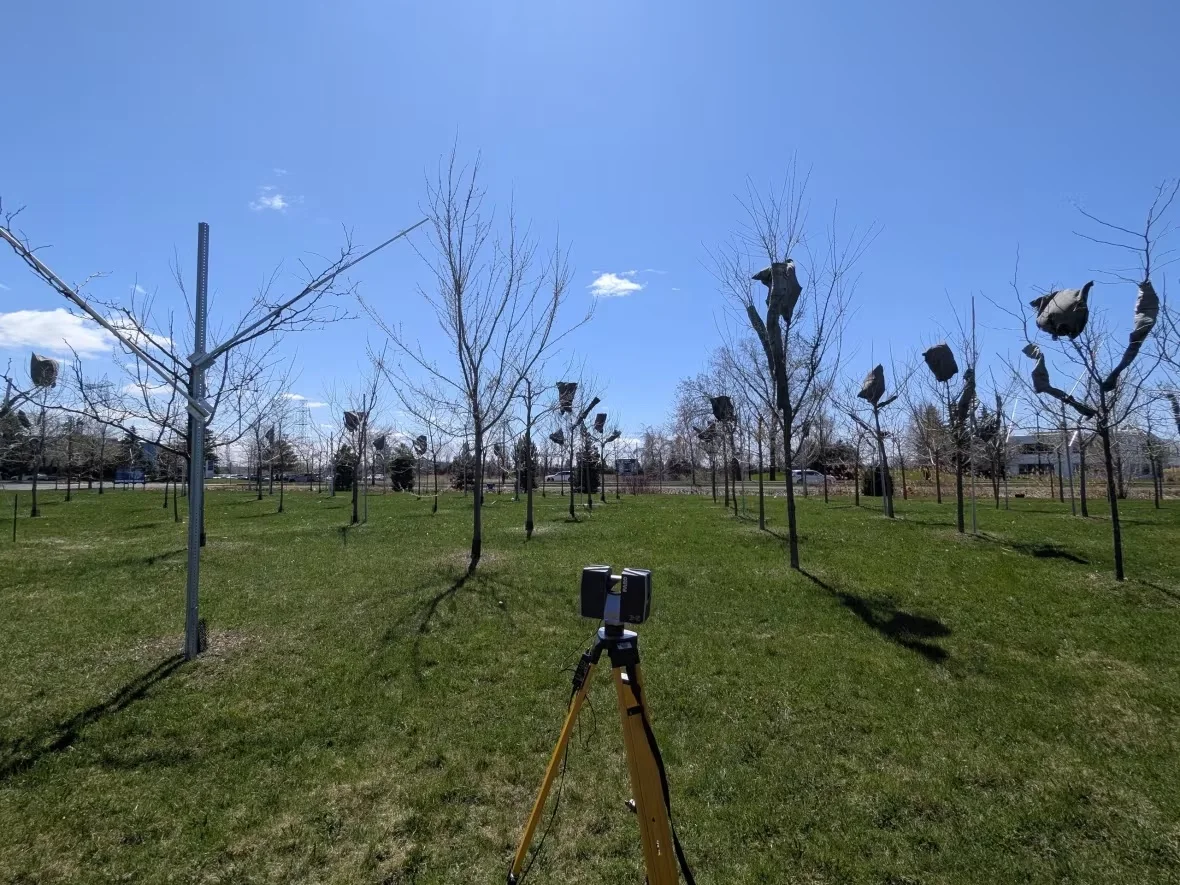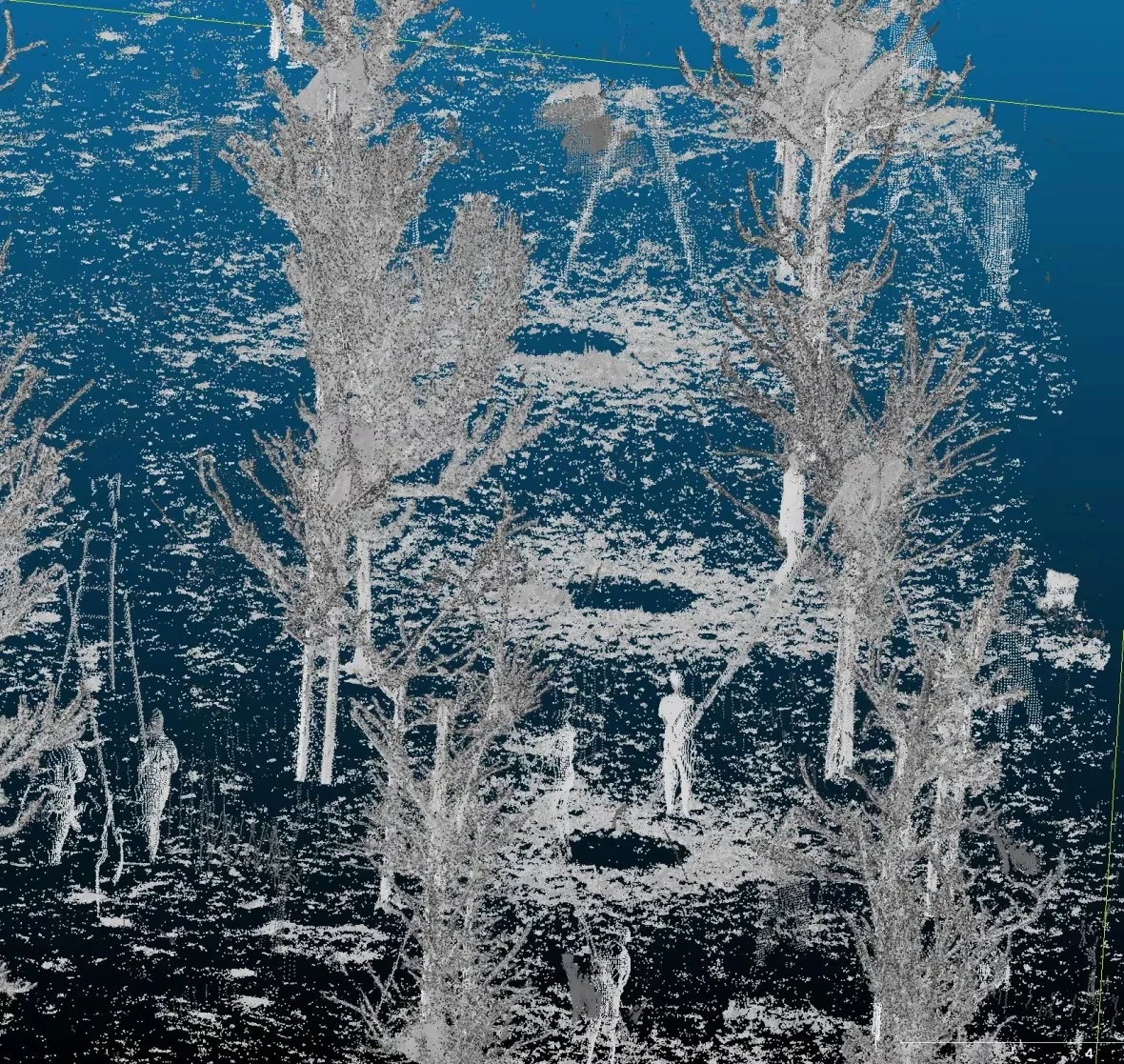
Hydro-Québec using AI to reduce power outages caused by trees
Montreal's tree-lined streets are one of the city's greatest assets — they clean the air, add bursts of green to the scenery and help push the concrete background. But when storms hit, those trees clash with the urban landscape and are a major cause of power outages.
That's why Hydro-Québec is now using new technologies to find a way for trees to coexist with its power lines.
SEE ALSO: Canada endures another tough wildfire season. Can AI be a major help?
Through a partnership with the Chaire ArbrenVil at the Université du Québec à Montréal (UQAM), Hydro-Québec is mapping out its network using light detection and ranging laser technology, otherwise known as LiDAR, to scan an area and create three dimensional information about it.
"We're trying to make a digital twin of the network to see if there are interactions between the tree and the network," said Étienne Langdeau, director of vegetation management for Hydro-Québec.
Artificial intelligence then measures the trees before and after a weather event, like a windstorm, to see which branches broke. The algorithm uses this information to get better at predicting which branches are most likely to snap. In turn, technicians can preemptively cut these branches before they become a problem.
While the project is still in the research and development phase because the tools are novel, the results are promising, researchers say.

Researchers are using LiDAR censors to collect data on the trees planted in Hydro-Québec's experimental forest. (Submitted by Loïc Charlebois-Vachon)
According to Christian Messier, the lead researcher on this project and a biology professor at UQAM, the project is about helping to strike a balance between protecting the power grid while not getting in the way of more trees being planted.
"They [Hydro-Québec] were interested in having someone who will investigate how we could better reconcile the need to have more trees, more canopy in the city and reduce the problem associated with these trees," said Messier.
"So instead of doing what we do now, what I call a kind of a shotgun approach where we eliminate as many branches as possible, we can now intervene, we hope, in a more precise way."
Tree growth manipulation
In St-Bruno-de-Montarville, on Montreal's South Shore, Hydro-Québec hosts an experimental plantation with hundreds of trees.
"My work is really trying to get big data on these trees," said Loïc Charlebois-Vachon, a Hydro-Québec intern who's been working on the grove.
"We run ground LiDAR at different places in the plantation to get these large point clouds and be able to analyze the different particularities of the trees, for example, the tree diameter, the tree biomass and the tree height."

Using metal stakes, researchers are trying to influence the direction in which trees grow. (Natalia Weichsel/CBC)
They also test out different growth manipulation techniques to see what sticks. One of them uses stakes to get the tree to grow in a "y" shape instead of straight up. This way, the tree can have a large mass of leaves while naturally avoiding the power lines.
Researchers working on the grove share what they learn with Hydro-Québec technicians to implement in the field.
"The goal is really to see which species respond the best to which treatments, see which treatment is the most effective," said Charlebois-Vachon.
'We need trees'
With climate change, extreme weather events will likely become more frequent, so the public utility is trying to get ahead of the issue with this project.
"We have more and more big storms … that can create lots of problems, so much so that some people even advocate that we should reduce the amount of trees that we establish in the cities," said Messier. "But I believe this is wrong. We need trees."
Trees bring lots of benefits to cities, says Derek Robinson, professor at the University of Waterloo's department of geography and environmental management. They filter the air, reduce flooding risks, act as noise filters and much more.

Hydro-Québec is using LiDAR technology to create a 'digital twin' of its network and monitor trees, as shown here. (Submitted by Loïc Charlebois-Vachon)
"The project is exciting," said Robinson, who uses LiDAR technology for his own tree data gathering research. He notes that although some gaps in accuracy can arise with the sensors, this is a "great application" of the technology.
"That relationship between the power line, the power poles holding up those power lines and the trees is something that LiDAR data is really good at."
When Messier was first approached by Hydro-Québec 15 years ago, there wasn't much research on how to reduce the problems caused by trees in urban settings. But now, there are more researchers looking at these issues and new technologies to help them, he says.
"These new technologies … are great tools that allow us to really have a better understanding of how to grow large trees in the city while minimizing the risk of having damage on our electrical lines."
WATCH: How AI could help Canada combat wildfires
Thumbnail courtesy of Natalia Weichsel/CBC.
The story was originally written by Charlotte Lepage and published for CBC News. It contains files from Natalia Weichsel.